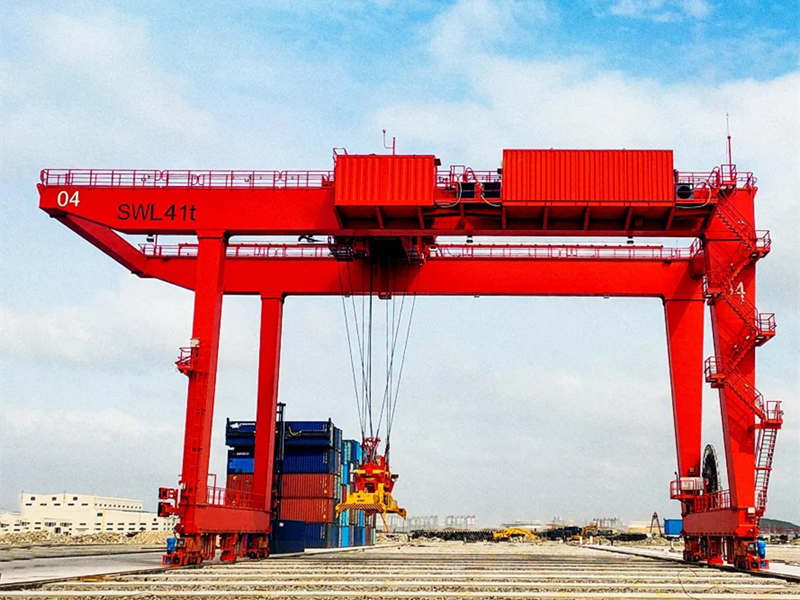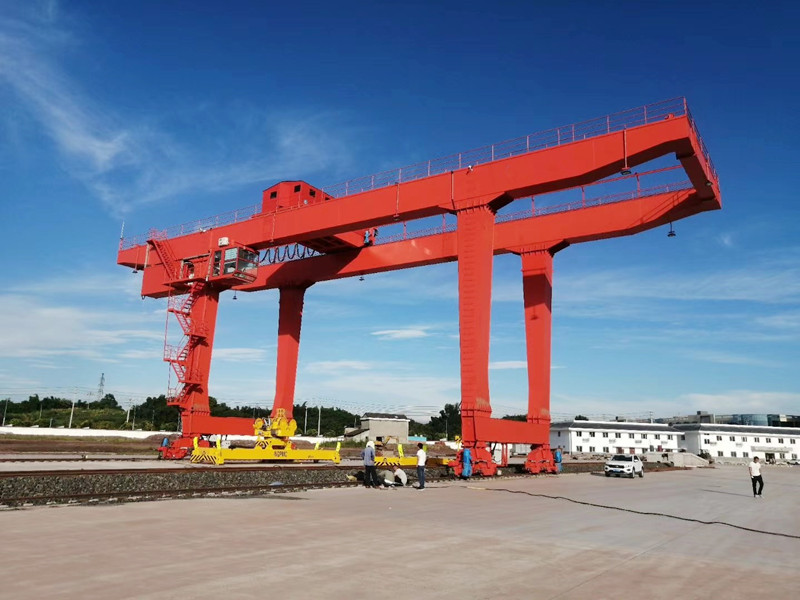Container cranes play a crucial role in the efficient movement of goods in ports and container terminals worldwide. These massive machines are designed to handle the lifting, moving, and stacking of containers, making them essential to global trade. There are several types of container crane models, each with unique features and advantages, tailored to specific operational needs.

Types of Container Crane Models
Ship-to-Shore (STS) Cranes
Ship-to-Shore cranes, also known as quay cranes, are perhaps the most iconic type of container crane model. These cranes are positioned on the quay and are used to load and unload containers from ships.
Design and Functionality: STS cranes are designed with a large boom that can extend over the entire width of a ship, allowing them to reach containers stacked deep in the vessel. They typically have a trolley that moves along the boom, equipped with a spreader to lift containers.
Variants: There are different variants of STS cranes, including Panamax, Post-Panamax, and Super-Post-Panamax cranes, categorized by their reach and lifting capacity, which are designed to handle vessels of varying sizes.
Advantages:
High efficiency in loading and unloading ships.
Ability to handle large container vessels, reducing turnaround time.
Advanced automation options for increased precision and speed.
Rubber Tyred Gantry (RTG) Cranes
Rubber Tyred Gantry cranes are mobile cranes used primarily for stacking containers in the container yard. Unlike rail-mounted cranes, RTG cranes are equipped with rubber tires, allowing them to move across the yard.
Design and Functionality: RTG cranes consist of a gantry structure with a spreader that can be moved horizontally and vertically to stack containers. They are equipped with tires that provide mobility within the yard, and some models are hybrid or electric to reduce emissions.
Advantages:
Flexibility in movement, as they are not confined to fixed rails.
Ability to stack containers in narrow spaces, maximizing yard space.
Lower operational costs due to reduced rail infrastructure requirements.
Rail Mounted Gantry (RMG) Cranes
Rail Mounted Gantry cranes are similar to RTGs but operate on fixed rails, making them ideal for high-density container yards where space utilization is critical.
Design and Functionality: RMG cranes are typically larger and more robust than RTGs. They run on rails and are used for stacking and moving containers within container terminals. Their operation is highly automated, with advanced control systems for precise handling.
Advantages:
High stacking capacity, suitable for large container terminals.
Enhanced stability and load handling due to the rail system.
Reduced environmental impact with electric-powered models.
Straddle Carriers
Straddle carriers are specialized container crane models designed for transporting and stacking containers within a terminal. They are self-propelled and can pick up containers directly from the ground.
Design and Functionality: Straddle carriers https://aicranemachine.com/straddle-carrier/ straddle the container, lifting it from the ground or from a chassis and moving it to the desired location. They are highly maneuverable and are used in conjunction with other types of cranes for efficient container handling.
Advantages:
High flexibility in container handling, allowing for quick movement within the terminal.
Ability to operate independently without the need for other equipment to move containers.
Efficient use of space due to their compact design and ability to stack containers up to four high.
Mobile Harbor Cranes
Mobile Harbor cranes are versatile cranes used for various types of cargo handling, including containers. They are mounted on rubber tires or crawler tracks, allowing them to be moved around the port.
Design and Functionality: These cranes are highly adaptable and can be used for different cargo types. They are equipped with telescopic booms that can be extended to reach across the hold of a vessel or to stack containers in the yard.
Advantages:
High flexibility and mobility, allowing them to be deployed where needed.
Versatility in handling different types of cargo, including bulk, general, and containerized goods.
Cost-effective for smaller ports or terminals that handle a variety of cargo.
Automated Stacking Cranes (ASC)
Automated Stacking Cranes are fully automated rail-mounted gantry cranes designed for stacking containers in a container yard. These cranes are part of an automated terminal system where operations are controlled by a central computer system.
Design and Functionality: ASCs are similar in design to RMG cranes but are fully automated, with no operator cabins. They are guided by sensors and software to stack containers precisely and efficiently.
Advantages:
High efficiency due to automation, reducing human error and increasing handling speed.
Enhanced safety, as there is minimal human intervention.
Optimized space utilization with precise stacking capabilities.

Advantages of Different Container Crane Models
Each container crane model offers specific advantages depending on the operational requirements of the terminal or port. Here’s a summary of the benefits offered by different crane models:
Efficiency:
STS cranes provide the highest efficiency for ship loading and unloading, especially for large container vessels.
ASCs offer unparalleled efficiency in container stacking due to their automation.
Flexibility:
RTG cranes and Mobile Harbor cranes offer great flexibility in operations, allowing terminals to adapt to different cargo types and operational needs.
Straddle carriers add an extra layer of flexibility by allowing direct container movement within the terminal without relying on other equipment.
Space Utilization:
RMG cranes and ASCs are excellent for high-density stacking, making them ideal for terminals with limited space.
Straddle carriers and RTGs help maximize yard space by allowing containers to be stacked in narrow spaces.
Environmental Impact:
Electric-powered RMG cranes and ASCs reduce emissions, contributing to greener terminal operations.
Hybrid and electric RTGs also offer environmentally friendly options for container handling.
Cost-Effectiveness:
Mobile Harbor cranes are cost-effective for smaller ports, providing versatility without the need for extensive infrastructure.
Straddle carriers and RTGs reduce the need for fixed infrastructure, lowering overall operational costs.
Choosing the right container crane model is crucial for the efficient operation of a container terminal. Each model offers unique advantages, from the high efficiency of STS cranes to the flexibility of RTGs and the automation of ASCs. By understanding the specific needs of the terminal and the capabilities of each crane model, operators can optimize their operations, ensuring that containers are handled safely, efficiently, and cost-effectively.